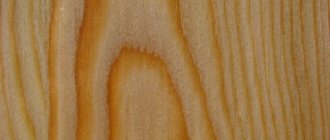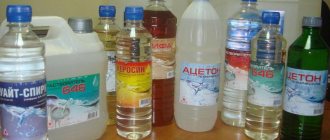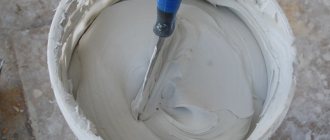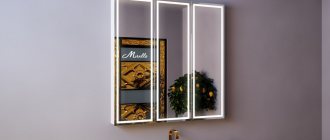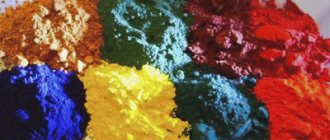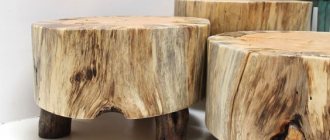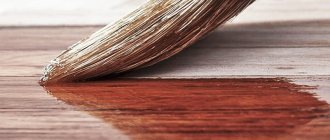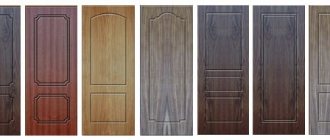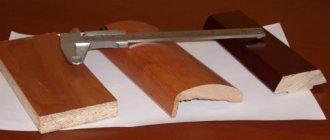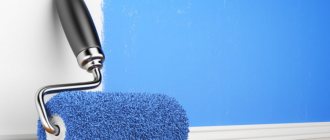Varnishing surfaces, products and materials is an excellent way to decorate and protect from moisture, temperature and damage. Varnishes are used for household and industrial purposes. The compositions can be used to coat wooden, metal, plaster, brick, and concrete surfaces - a specific varnish is suitable for each material. To ensure that the composition acquires the viscosity required for work, varnish thinner is used. The product differs from the solvent in its characteristics and purpose.
Composition of acrylic varnish
If you study the composition of acrylic varnish in more detail, you will find the following elements:
- Liquid polymer
- Plasticizer providing a film resistant to mechanical damage
- Antiseptic to protect wood from fungus
Often you can find water in the composition.
Alkyd mixtures
Alkyd compounds have good adhesion, moisture resistance, insensitivity to ultraviolet radiation, and strength. They can be used for external and internal work. Alkyd mixtures contain a main component, organic solvents, driers (for faster drying), and additives. The main component may be:
- pentaphthalic resin;
- glypthal resin with cotton oil;
- a mixture of melamine-formaldehyde and alkyd resins.
To enhance the properties of materials, elements of alkyd resins are often included in multicomponent varnishes, paints, and enamels. The traditional thinner here is white spirit.
Properties of acrylic varnish
Although the product is initially sold in ready-to-use form, this paint and varnish material can, if desired, be diluted with ether, alcohol or water (only the mass fraction of the solvent should not exceed 10 percent of the total liquid).
- With such diversity, there is no question of how to dilute the varnish. Also, despite the ability of the varnish to dissolve in water, it cannot be washed off after drying. It is also noted for its resistance to moisture, so you don’t have to worry about the coating after using household chemicals on it.
- Acrylic varnish has exceptional durability and elasticity. The coating does not crack or delaminate at low and high temperatures, and does not lose its transparency even under prolonged exposure to sunlight.
An important advantage of acrylic varnish is environmental friendliness. After application, no pungent odor remains and no caustic toxic substances are released. This makes it absolutely safe for application both indoors and outdoors.
Acrylic varnish is famous for its versatility. It lays easily and evenly on different surfaces: cardboard, paper, wallpaper, plastic, brick, glass, plaster and, of course, wood.
In the latter case, it is often necessary to apply several layers or even sand, since the water, often included in this varnish, is absorbed into the wood. Because of this, it swells, and the surface becomes rough and unpresentable. But, thanks to the properties of the antiseptic, the tree will be protected from mold and mildew.
Despite the large number of advantages, like any other product, acrylic varnish has its disadvantages. To be more precise, these are difficulties in storing and applying it.
Since the composition contains a certain amount of water, at temperatures below zero it freezes and the varnish becomes unusable. And when applied, the air must be heated from 5 to 30 degrees Celsius, there must be no wind and no direct exposure to ultraviolet rays.
Types of acrylic varnish
Today the market offers a huge range of acrylic paints and varnishes. Therefore, before purchasing, you should decide for what purpose the varnish is required and what effect you want to achieve in the end.
Water-based acrylic varnish can be divided according to its composition into:
- One-component. In such varnishes, only acrylic is used as a binding component, and only it gives the film elasticity. It keeps surfaces from fading and also allows air to pass through (which has a particularly positive effect on wood products). Of the minuses: it is poorly resistant to moisture and abrasion.
- Two-component. In addition to acrylic, polyurethane is added to such varnishes. They are more in demand for application to external surfaces, as they are more resistant to the external environment.
According to the coating effect, acrylic varnishes are divided into:
- Glossy. Gives the object shine, but really highlights all scratches and damage on the surface.
- Matte. The coating becomes velvety and does not reflect light at all. The film can hide minor plane sins.
- Semi-matte. There is a slight flicker. This varnish clearly reveals the texture of the material.
It is worth noting that any of the proposed acrylic varnishes is intended for the final coating. Its main functions include protection from chemical and physical influences, but not the treatment of material irregularities.
Precautionary measures
Yacht varnishes contain harmful components necessary to perform the tasks assigned to the product. After application, toxic fumes may be released into the air. Whatever the manufacturers say, using shiplap varnish to cover the floor is not the best option.
If you still decide to use it, give preference to urethane-alkyd based products. Otherwise, after a few months you may experience problems with your physical condition.
It is not recommended to use this product on furniture that comes into contact with food. For example, it is strictly forbidden to use it on kitchen cabinets. It is better to use ship varnish outdoors. This is due to the released harmful substances.
Using it at home can cause depression and nervous disorders. It is especially dangerous for children. Therefore, think about whether it is worth using yacht varnish at home.
The price of health is still higher.
Areas of application of acrylic varnish
No matter how versatile acrylic varnish is, it is better to use certain types of it for different surfaces in accordance with the advantages and disadvantages of each of them.
- You can often see acrylic varnish on wooden surfaces. For parquet, glossy and semi-matte varnishes are usually used, forming a thin layer. Special compounds are created that can withstand long-term friction.
- However, we cannot use such varnish (parquet) on rough boards. For them, it is better to choose thick-layer options, otherwise the coating will crack. It is also advisable to include special additives in the composition for this type of flooring in order to maintain their durability.
A varnish has been developed for application to indoor walls. It can be used for the bathroom and kitchen, as it is molded to be resistant to moisture and temperature changes.
Using this material it is very convenient to protect furniture, railings, stairs, frames, etc. Paintings are also coated with a special variety to preserve their color for a long time; it is suitable for paper of any density.
Coverage options
Using yacht varnish allows you to obtain a wooden surface of two types:
Which is better: heated floors or radiators?
Warm floorBatteries
- Matte is a more practical option. After treatment with this product, the wood is not covered with dust and gets less dirty.
- Glossy, which will allow you to enjoy a beautiful, spectacular shine. But when you touch such surfaces, unsightly dirty “fingers” may remain.
Everyone decides for themselves which varnish to choose. Anti-rust enamel primer for exterior metal work 3 in 1? It all depends on the homeowner’s own preferences and taste.
How to apply acrylic varnish?
Before using the varnish, you need to stir it thoroughly, especially if it seems dissimilar in the jar.
During application, the temperature should range from 5 to 30 degrees Celsius, humidity about 50%, and it is also advisable to exclude direct sunlight and drafts.
Craftsmen recommend pre-treatment of the surface. To begin, thoroughly wipe the surface from dirt and stains, then sand and prime with a tinted impregnation or water-based primer.
- After applying the first layer, sanding after drying is also possible, and in order to obtain a mirror-like surface for wood, it must first be wetted (wet sanding method).
- Before starting to apply the next layer, experts suggest waiting a day, although according to the instructions it dries from half an hour to two hours. Next, each subsequent layer of varnish (usually 2-3 are applied) continues to be sanded with fine sandpaper, except for the last one.
You can also restore and renew a surface that was once painted with varnish using acrylic varnish. To do this, the previous layer must be carefully treated with fine sandpaper and degreased, and then fresh varnish must be applied.
Tools for applying varnish
When applying varnish, personal protection is strongly recommended: mask, gloves, closed clothing. Before use, you should wash all tools with warm water, and for cleaning you can use regular soap or dishwashing detergent.
Tools are selected based on the specifics of the object being processed:
- Brush. Using a brush is the easiest way to apply the material to uneven surfaces and hard-to-reach places. For acrylic varnish in particular, brushes with medium-length artificial bristles are better suited.
- Roller. The best option for large, flat surfaces.
- Spray gun. It is used for large-scale work, does not form smudges and requires appropriate care. Protective suit and mask are required.
